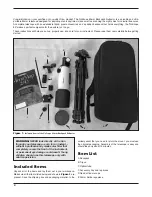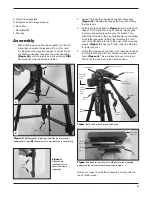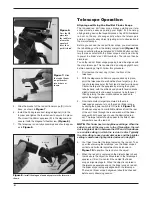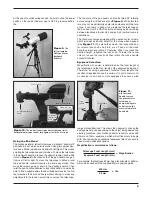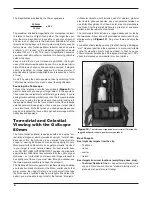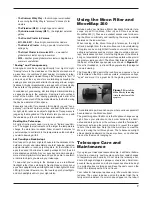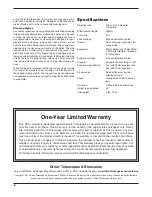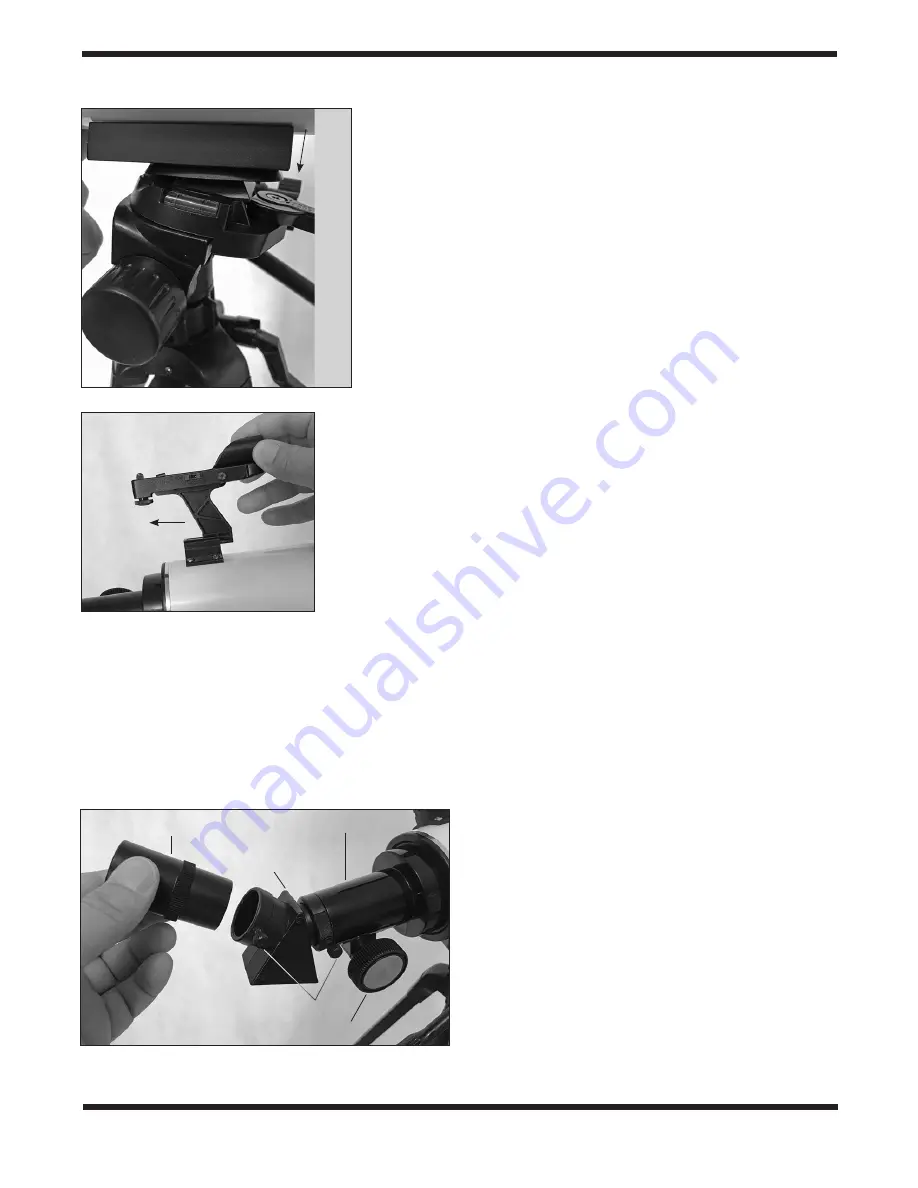
4
5. Slide the bracket of the red dot finder scope (D) into its
base, as shown in
Figure 7
.
6. Install the 45-degree correct-image diagonal (G) in the
focuser and tighten the thumbscrew to secure it in place.
Then insert the 25mm eyepiece (E) in the diagonal and
secure it with the diagonal’s thumbscrew.
(Figure 8)
.
7. The telescope is now fully assembled and should appear
as in
Figure 9
.
Telescope Operation
Aligning and Using the Red Dot Finder Scope
The included red dot finder scope makes pointing your tele-
scope almost as easy as pointing your finger! It’s a non-mag-
nifying aiming device that superimposes a tiny LED-illuminated
red dot on the sky, showing exactly where the telescope is
pointed. It permits easy object targeting prior to observation in
the main telescope.
Before you can use the red dot finder scope, you must remove
the tab sticking out from the battery compartment
(Figure 10)
.
Doing so will allow the pre-installed 3V CR-2032 button cell bat-
tery to make contact with the finder scope’s electronic circuitry
to power the finder’s red LED illuminator. The tab can then be
discarded.
To use the red dot finder scope properly, it must be aligned with
the main telescope. This is easiest to do during daylight hours,
before observing at night. Follow this procedure:
1. First, remove the dust cap (J) from the front of the
telescope.
2. With the diagonal and 25mm eyepiece already in place,
point the telescope at a well-defined land target (e.g., the
top of a telephone pole) that’s at least a quarter mile away.
Center the target in the eyepiece by moving the optical
tube by hand, with the altitude and azimuth tension knobs
slightly loosened to allow easy movement in both axes),
then by turning the slow-motion cables as needed to
center the target object.
3. Now that a distant target is centered in the main
telescope’s eyepiece, turn on the red dot finder scope
by sliding the power switch to ON (refer to
Figure 10
).
Position your eye at a comfortable distance from the rear
of the unit. Look through the round window of the finder
scope with both eyes open to see the illuminated red
dot. The target object should appear in the field of view
somewhere near the red dot.
NOTE:
This finder has two brightness settings. When the
switch is set all the way over to the ON position, the red
dot is brightest. But in between the OFF and ON positions
is a middle setting in which the red dot is dim. Typically
the dim setting is used under dark skies and the brighter
setting is used under light-polluted skies or in daylight.
4. You’ll want to center the target object on the red dot. To do
so, without moving the telescope, use the finder scope’s
vertical and horizontal adjustment knobs (shown in
Figure 10
) to position the red dot on the object.
5. When the red dot is centered on the distant object, check
to make sure the object is still centered in the telescope’s
eyepiece. If it isn’t, re-center it then adjust the finder
scope’s alignment again. When the object is centered in
the telescope eyepiece and on the finder scope’s red dot,
the finder scope is properly aligned with the telescope.
The red dot finder scope’s alignment should be checked
before every observing session.
Figure 8.
Install the diagonal and an eyepiece in the focuser as
shown.
Figure 6.
Press the QR
plate into
the saddle to
release the
open lock
lever, then
push it closed.
Figure 7.
Slide
the red dot finder
scope’s bracket
into its base as
shown.
press
Eyepiece
Diagonal
Thumbscrews
Focus wheel
Focuser


